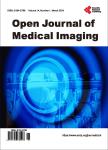Feasibility of Improved Attenuation Correction for SPECT Reconstruction in the Presence of Dense Materials Using Dual-Energy Virtual Monochromatic CT: A Phantom Study
Feasibility of Improved Attenuation Correction for SPECT Reconstruction in the Presence of Dense Materials Using Dual-Energy Virtual Monochromatic CT: A Phantom Study作者机构:Department of Radiology Osaka University Hospital Osaka Japan Department of Medical Physics and Engineering Osaka University Graduate School of Medicine Osaka Japan Center for Information and Neural Networks National Institute of Information and Communications Technology Osaka Japan Graduate School of Frontier Biosciences Osaka University Osaka Japan Department of Molecular Imaging in Medicine Osaka University Graduate School of Medicine Osaka Japan Department of Traumatology and Acute Critical Medicine Osaka University Graduate School of Medicine Osaka Japan Department of Nuclear Medicine and Tracer Kinetics Osaka University Graduate School of Medicine Osaka Japan
出 版 物:《Open Journal of Medical Imaging》 (医学影像期刊(英文))
年 卷 期:2015年第5卷第4期
页 面:183-193页
学科分类:1002[医学-临床医学] 100214[医学-肿瘤学] 10[医学]
主 题:SPECT Attenuation Correction Dual-Energy CT Virtual Monochromatic Imaging Artifact Reduction
摘 要:Objective: Computed tomography (CT)-based attenuation correction (CTAC) offers the clear benefit of reliable reconstruction of single-photon emission computed tomography (SPECT) images through its ability to achieve object-specific attenuation maps, but artifacts from dense materials often deteriorate CTAC performance. Therefore, we investigate the feasibility of CTAC in the presence of dense materials using dual-energy virtual monochromatic CT data. Methods: A sodium pertechnetate-filled cylindrical uniform phantom, with a pair of undiluted iodine syringes attached, is scanned with a dual-source CT scanner to obtain both single-energy (120 kVp) polychromatic and dual-energy (80 kVp/140 kVp with tin filtering) virtual monochromatic CT images. The single-energy and the dual-energy CT images are then converted to attenuation maps at 141 keV. SPECT images are reconstructed from 99mTc emission data of the phantom using each single-energy and dual-energy attenuation map and incorporating CTAC procedure. A region-of-in- terest analysis is performed to quantitatively compare the attenuation maps between the single-energy and the dual-energy techniques, each at an iodine-free position and a position adjacent to the iodine solutions. Results: At the iodine-free position, the phantom provides a uniform distribution of attenuation maps in both the single-energy and the dual-energy techniques. In the presence of adjacent iodine solutions, however, severe artifacts appeare in the single-energy CT images. These artifacts make attenuation values fluctuate, resulting in erroneous pixel values in the CTAC SPECT images. In contrast, dual-energy CT strongly suppresses the artifacts and hence improves the uniformity of the attenuation maps and the resultant SPECT images. Conclusions: Dual-energy CT with virtual monochromatic reconstruction has the potential to substantially reduce artifacts arising from dense materials. It has the potential to improve the accuracy of attenuation maps a



